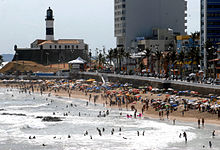
Daniela Mercury is a Brazilian singer, songwriter, dancer, and producer. In her solo career, Mercury has sold over 11 million records worldwide, and had 24 Top 10 singles in the country, with 14 of them reached No. 1. Winner of a Latin Grammy for her album Balé Mulato – Ao Vivo, she also received six Brazilian Music Award, an APCA award, three Multishow Brazilian Music Awards and two awards at VMB: Best Music Video and Photography.

Axé is a popular music genre originated in Salvador, Bahia, Brazil in the 1980s, fusing different Afro-Caribbean genres, such as marcha, reggae, and calypso. It also includes influences of Brazilian music such as frevo, forró and carixada. The word Axé comes from the Yoruba term àṣẹ, meaning "soul, light, spirit or good vibrations". Axé is present in the Candomblé religion, as "the imagined spiritual power and energy bestowed upon practitioners by the pantheon of orixás". It also has ties with the Roman Catholic Church and the Lenten season, which represents the roots of Bahian Carnival.
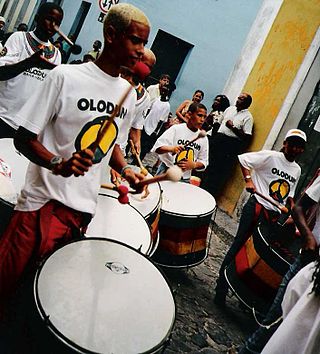
Olodum is a bloco-afro from Salvador's carnival, in Bahia, Brazil. It was founded by the percussionist Neguinho do Samba.
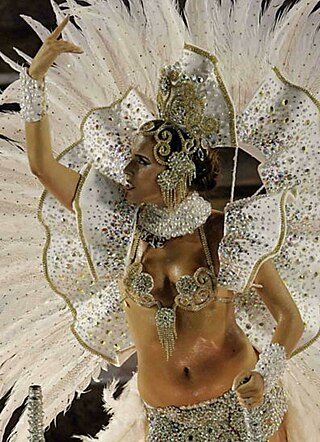
The Carnival of Brazil is an annual festival held the Friday afternoon before Ash Wednesday at noon, which marks the beginning of Lent, the forty-day period before Easter. During Lent, Roman Catholics and some other Christians traditionally abstained from the consumption of meat and poultry, hence the term "carnival", from carnelevare, "to remove meat."
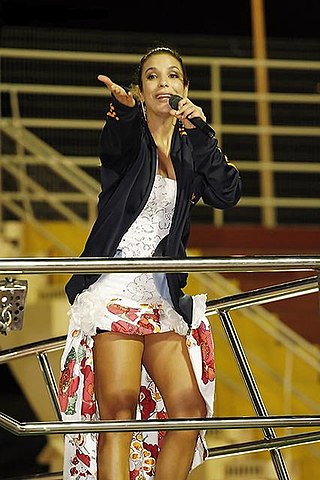
Trio elétrico is a kind of truck or float equipped with a high-power sound system and a stage for music performance on the top, playing for the crowd as it drives through the cities. It was created in Bahia specifically for Carnival and it is now used in similar events in other districts and countries. This setup is used in Brazilian Carnival inside the blocos carnavalescos and other festivals in Brazil, specially in micaretas. The idea was introduced in 1949 during a carnival in Bahia by the duo Dodô e Osmar.

Chiclete com Banana is an Axé music band, currently consisting of Bell Marques, Wadinho Marques, Rey, Waltinho Cruz, Deny and Lelo. The group is named after the very well known and influential song "Chiclete com Banana", written by Gordurinha and Almira Castilho, which was first recorded in 1959 by Brazilian popstar Jackson do Pandeiro and by dozens of performers, including Gilberto Gil.

The electric mandolin is an instrument tuned and played as the mandolin and amplified in similar fashion to an electric guitar. As with electric guitars, electric mandolins take many forms. Most common is a carved-top eight-string instrument fitted with an electric pickup in similar fashion to many archtop semi-acoustic guitars. Solid body mandolins are common in 4-, 5-, and 8-string forms. Acoustic electric mandolins also exist in many forms.

Frevo is a dance and musical style originating from Recife, Pernambuco, Brazil, traditionally associated with Brazilian Carnival. The word frevo is said to come from frever, a variant of the Portuguese word ferver. It is said that the sound of the frevo will make listeners and dancers feel as if they are boiling on the ground. The word frevo is used for both the frevo music and the frevo dance.
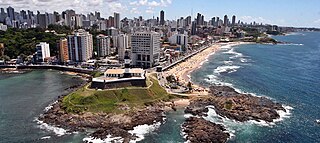
Salvador is a Brazilian municipality and capital city of the state of Bahia. Situated in the Zona da Mata in the Northeast Region of Brazil, Salvador is recognized throughout the country and internationally for its cuisine, music, and architecture. The African influence in many cultural aspects of the city makes it a center of Afro-Brazilian culture. As the first capital of Colonial Brazil, the city is one of the oldest in the Americas and one of the first planned cities in the world, having been established during the Renaissance period. Its foundation in 1549 by Tomé de Sousa took place on account of the implementation of the General Government of Brazil by the Portuguese Empire.
The term afoxé refers to a Carnival group originating from Salvador da Bahia, Brazil in the 1920s, and the music it plays deriving from the Afro-Brazilian Candomblé religion. It came to indicate a musical rhythm, named ijexá derived from the ijexá nation within Candomblé. Cultural performances of the afoxés, typically at Brazilian Carnival, incorporate choreography, song, ritual language and ceremonies deriving from the Candomblé religion. In Brazil, afoxé is generally performed by blocos, afros-groups of mostly black or mulatto musicians who are familiar with African Brazilian music. Afoxés are a cultural and religious entity that preserves a tradition of Afro-Brazilian culture.

The Carnival in Rio de Janeiro is a festival held every year before Lent; it is considered the biggest carnival in the world, with two million people per day on the streets. The first Carnival festival in Rio occurred in 1723.
Samba-reggae is a music genre from Bahia, Brazil. Samba reggae, as its name suggests, was originally derived as a blend of Brazilian samba with Jamaican reggae as typified by Bob Marley.

Ilê Aiyê is a carnival block from Salvador, Bahia, Brazil. It is located in the Curuzu/Liberdade neighborhood, the largest afro-descendent population area of Salvador. The name stems from the Yoruba language: Ilé - home; Ayé - life; which can be loosely translated as 'earth'. It was founded in 1974 by Antônio Carlos “Vovô” and Apolônio de Jesus, making it the oldest Afro-Brazilian block.
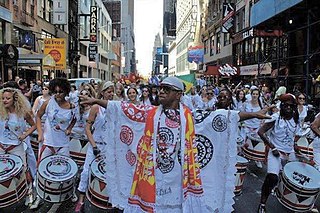
Batalá is an international samba reggae music project. The name Batalá is a combination of the phrase "bate lá" meaning "hit there" in Portuguese and Obatalá (Oxalá), the Candomblé deity who is the father of the Orixas and of all humanity.
Periperi is a subdistrict north of Salvador, in the Brazilian State of Bahia.
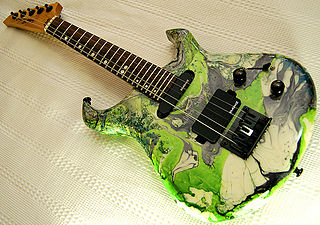
The Bahian guitar in Portuguese: guitarra baiana, pau elétrico is a Brazilian solid-body electric mandolin with either 4 or 5 strings, normally tuned GDAE and CGDAE, respectively, and has the scale of a cavaco, 6 String versions also exist.
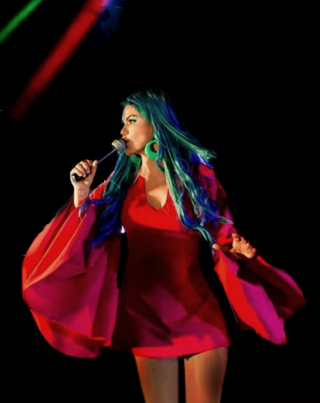
Gilmelândia Palmeira dos Santos known as Gil or Gilmelândia, is a Brazilian singer, actress and TV presenter. Her unusual first name, which is abbreviated on her CD covers to "Gil", was created by her parents in tribute to a friend of her mother's with an equally unusual name, Jumelânia.

Micaretas are off-season celebrations similar to Brazilian Carnival. The micaretas are similar to the Bahian Carnival and very different from the samba school parades that are popular in Rio de Janeiro. The central feature of a micareta is a large truck called a "trio elétrico." The trio elétrico is wired with loudspeakers and has a band performing on the truck's trailer. The truck drives slowly along the streets or sits parked in an enclosed space and a crowd follows the trio elétrico singing, dancing, and jumping to the sound of the music. To be allowed to follow the truck, one must buy admittance to one of the several "blocos" (block). A bloco is an enterprise which obtains permission to participate in the micareta, hires the band, sells admittance, and controls access.

Antônio Carlos Moreira Pires, better known as Moraes Moreira, was a Brazilian musician and songwriter. During the 1970s he played guitar and sang in the band Novos Baianos, after which he embarked on a solo career recording 29 albums. Moreira was involved in recording 40 full-length albums with Novos Baianos and Trio Elétrico Dodô e Osmar, and two more albums with guitarist Pepeu Gomes. Moreira was one of the most versatile composers of Brazil, mixing the genres of rock, samba, choro, frevo, baião, and classical.

República Independente da Banda Mole, or simply Banda Mole ), is a pre-carnival block from Belo Horizonte, Brazil. The name is a pun of bunda mole. It was created in the Lagoinha neighborhood in 1975. The block's main tradition is the gender swap: men parades dressed with women's clothes, and women the other way round.

